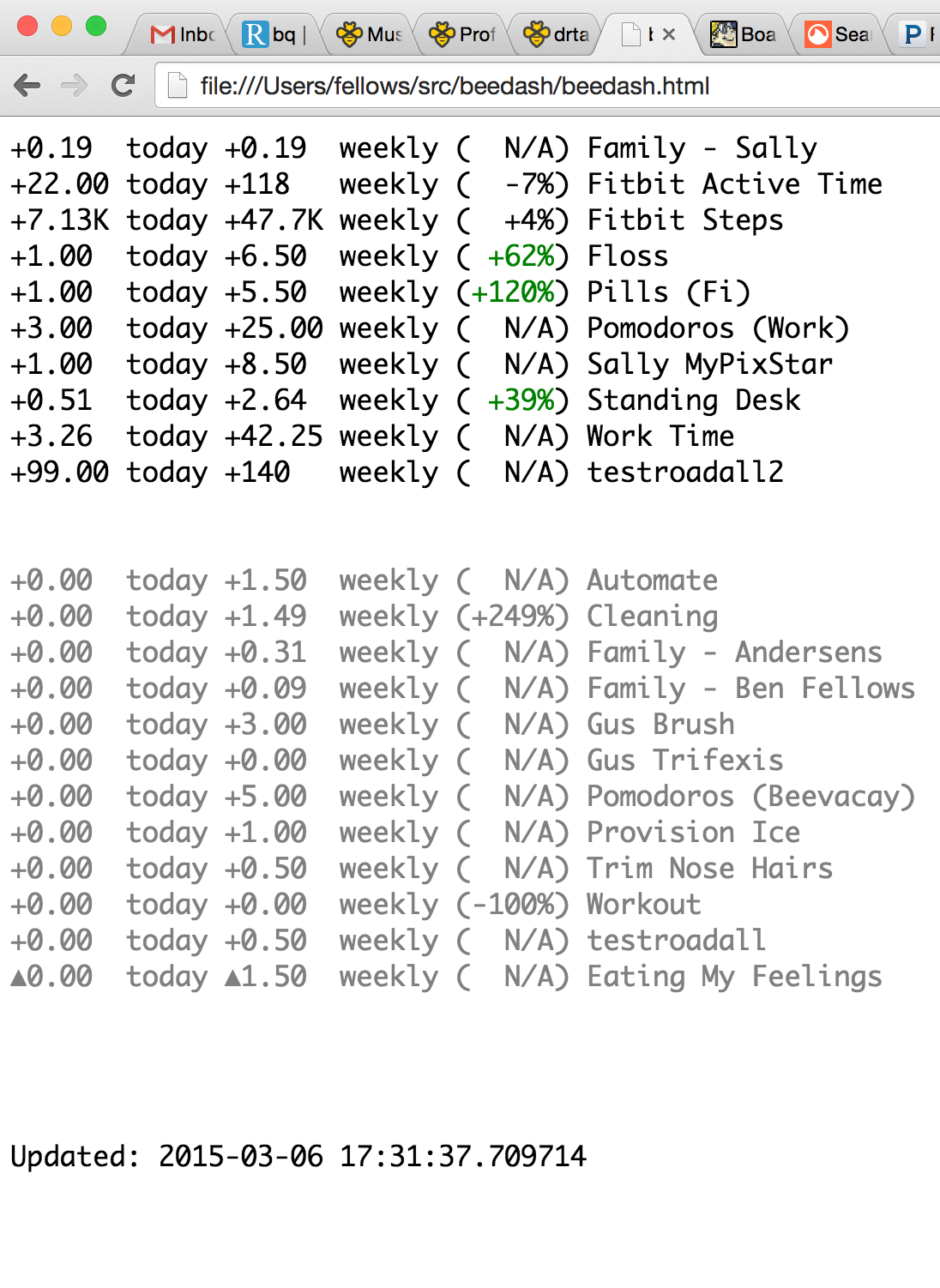Oh no, this one I don’t think you want. I tried to make the Beebegone thing suitable for public consumption but this one is a total mess of hacks and it’s super ugly too. Basically it prints an html file that I have open in Chrome using an extension to auto-refresh it…
Yeah I had a bunch of conversations with support about my Do Less goals mysteriously not derailing or alternatively mysteriously derailing after I thought I had understood all the rules. I burned out big time right around then ![]()
